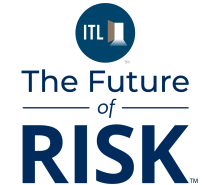After the chaotic first three weeks of the new Trump administration, it's impossible to know what the long-term effects will be of the tariffs, the rescinded tariffs, the threatened tariffs and the president's broad endorsement of "tariff" as "the most beautiful word in the English language." But some of the effects on the insurance industry are becoming clear, especially on auto insurance — and they aren't good.
This week, I'll tell you what I can about what happens next. I'll also take a look at the absence of insurance ads on the Super Bowl broadcast, which probably changes nothing but which I choose to take as a possible sign of a new seriousness by insurers to educate consumers on their needs for coverage and as a shift away from just pounding brand names into people's heads. Finally, I'll dig into a smart piece that provides a way to think about implementing generative AI, as "digital workers."
Let's start with the tariffs.
Auto insurance premiums have pretty much caught up with the surge in prices for new and used cars and for replacement costs that came out of COVID. It disrupted supply chains and made many parts scarce. The lack of cars on the roads led to increasingly reckless driving, which has been slow to wane even though driving has for years been back to pre-pandemic levels. Distracted driving seems to keep getting worse, too. The spread of technologies such as driver-assist has made repairs more expensive, as has the increasing market share of electric vehicles.
But just when you thought it was safe to get back in the water, here come the tariffs. Even the scaled-back version of Trump's tariffs, which cover only aluminum and steel, could add $1,500 to the price of a new car, according to this MSN article. The reason: The average car contains about 1,000 pounds of steel, at a cost of $6,000 to $7,000. Add a 25% tariff, and that steel costs $1,500 or so more.
As the article notes, car makers could shift suppliers to avoid the tariffs, but the higher cost of imports creates a pricing umbrella, and other suppliers will surely take the opportunity to raise prices.
If Trump follows through on the 25% tariffs he's threatened to apply to all goods from Canada and Mexico — before backing off in the face of a 600-point drop in the Dow Jones Industrial Average — the costs of cars and replacement parts would soar even more. The Wall Street Journal says the boost could be $3,000 per car. MSN goes further, putting the price increase at $6,250 for a $25,000 car.
Even if Trump never follows through on the tariff threats, "The damage has been done," according to a Georgetown University professor quoted in the WSJ. “We are going to have tremendous uncertainty looming over the industry for the foreseeable future…If I’m an insurance company, I’m pretty dour at the moment, and certainly highly motivated to pass on my risk in the form of higher premiums to consumers.”
That sounds right to me. I think we've reentered an inflationary phase for cars because of the tariffs and threatened tariffs. The only question is how bad it will be and how long it will last.
Now to the Super Bowl ads.
I suspect the reason for the absence of Mayhem, Flo, the GEICO gecko, etc. was the (smart) decision not to get caught up in a wave of ads by startups you'd never heard of and by established brands that somehow decided that having facial hair take on a life of its own would sell chips and pizza bites. (My younger daughter thinks both companies must have made the same sort of ill-advised prompt with a generative AI in a search for a novel idea.)
But I hold out hope for a more meaningful reason. I keep thinking the insurance industry will take seriously its complaints about a protection gap and will focus on educating consumers about the need for life insurance, flood insurance, etc. I keep thinking the industry will move toward the future of insurance — the Predict & Prevent model — and will help people think about how to harden their properties and communities against wildfire and other threats.
I've been thinking this for a long time. Here are articles I published as far back as 2016 and 2014 that complain about the reliance on ads vs. substance.
I won't even try to claim that the bang-your-name-into-people's-heads approach isn't effective marketing. I'm sure it is. But I'll keep hoping that the insurance industry will find a way to focus consumer attention on the really important long-term issues.
On to "digital workers."
You've read a lot recently about AI agents — including articles I've published at ITL — but I still commend to your attention a recent piece by my old friend and colleague John Sviokla, because it provides a useful way to think about agents, as well as a great example.
While AI often seems esoteric and vaguely threatening, John describes how AI personas can be created and simply put into the staffing pool, as any human would be. Hire the AI or don't; the choice is yours.
His great example is OneDigital, which helps meet work-life needs for more than 100,000 employers and which has created 10 digital workers, with about a dozen in the pipeline.
“'Frank' is an expert in sales effectiveness and strategizing on growing the services that OneDigital provides to existing clients," John writes. “'Yesper' was recently added to help managers mentor and support their team members while maintaining OneDigital’s innovation and client-first culture, as OneDigital has grown significantly over the last few years. There are many others, including 'Ben,' an expert at everything to do with lowering healthcare costs for OneDigital’s clients."
I remain cautious about AI agents, because I'm not ready to let them act on my behalf, but I can imagine having digital workers who report to me and who I supervise, perhaps rather closely, at least until they prove themselves. And the AIs available to us are improving so fast that we should be planning for the next round, and the one after that.
Cheers,
Paul


